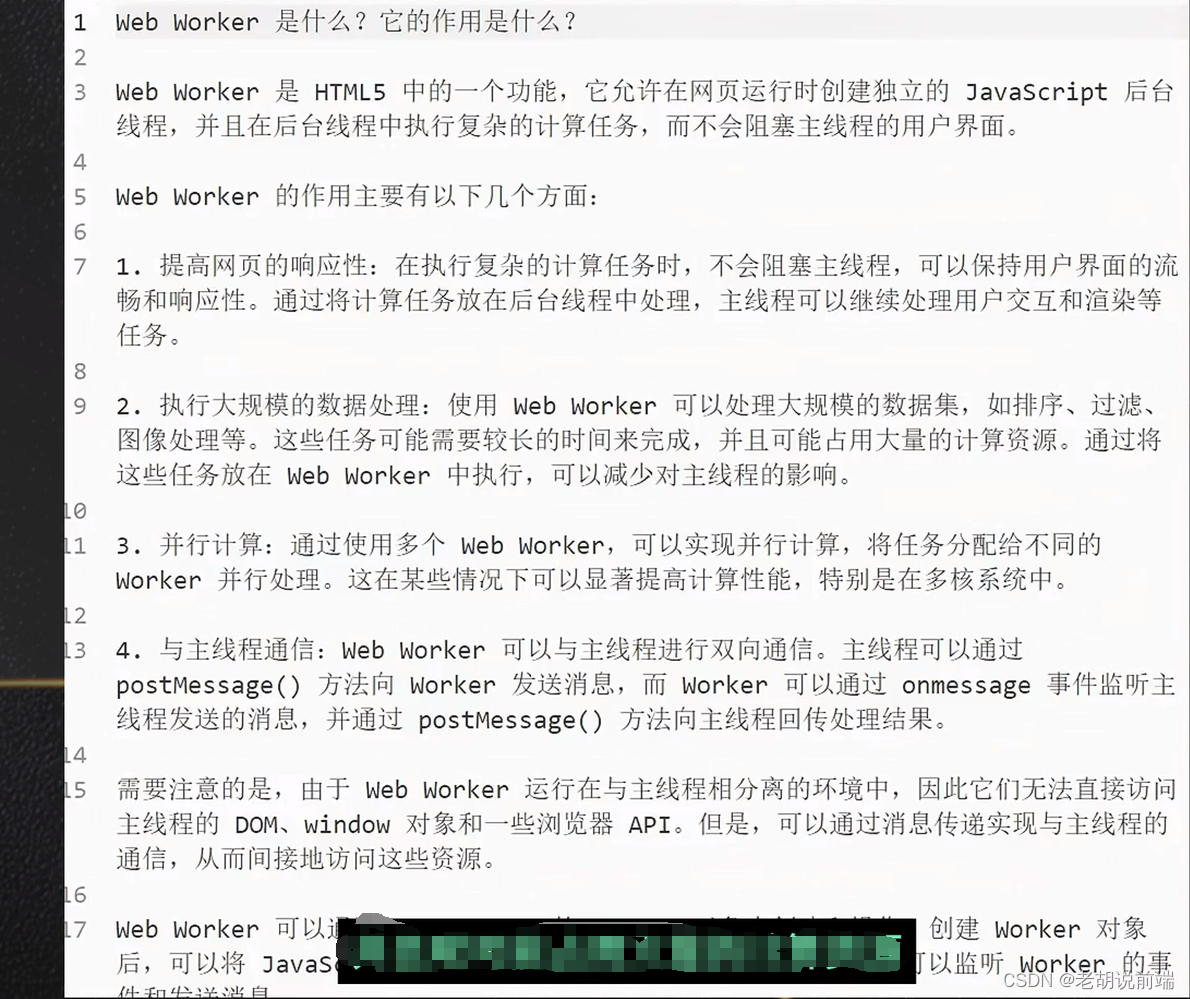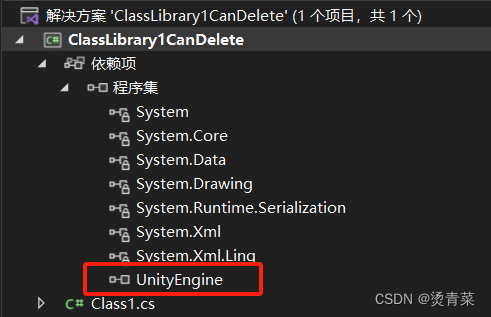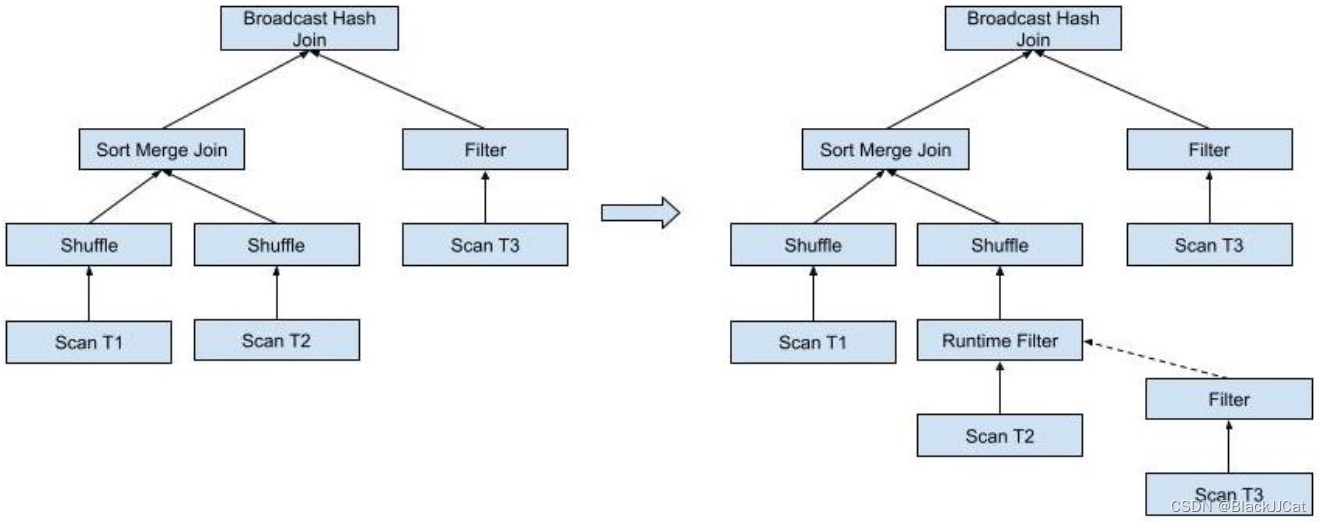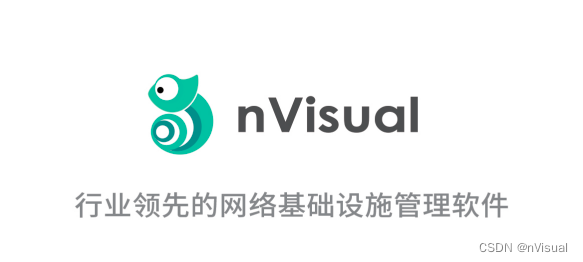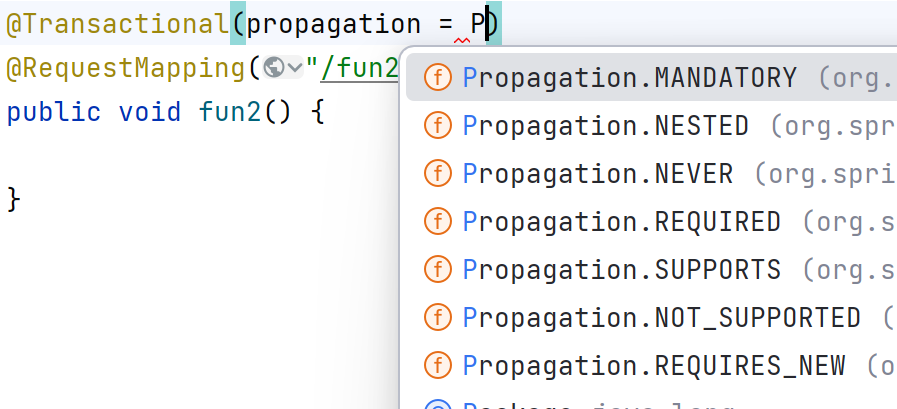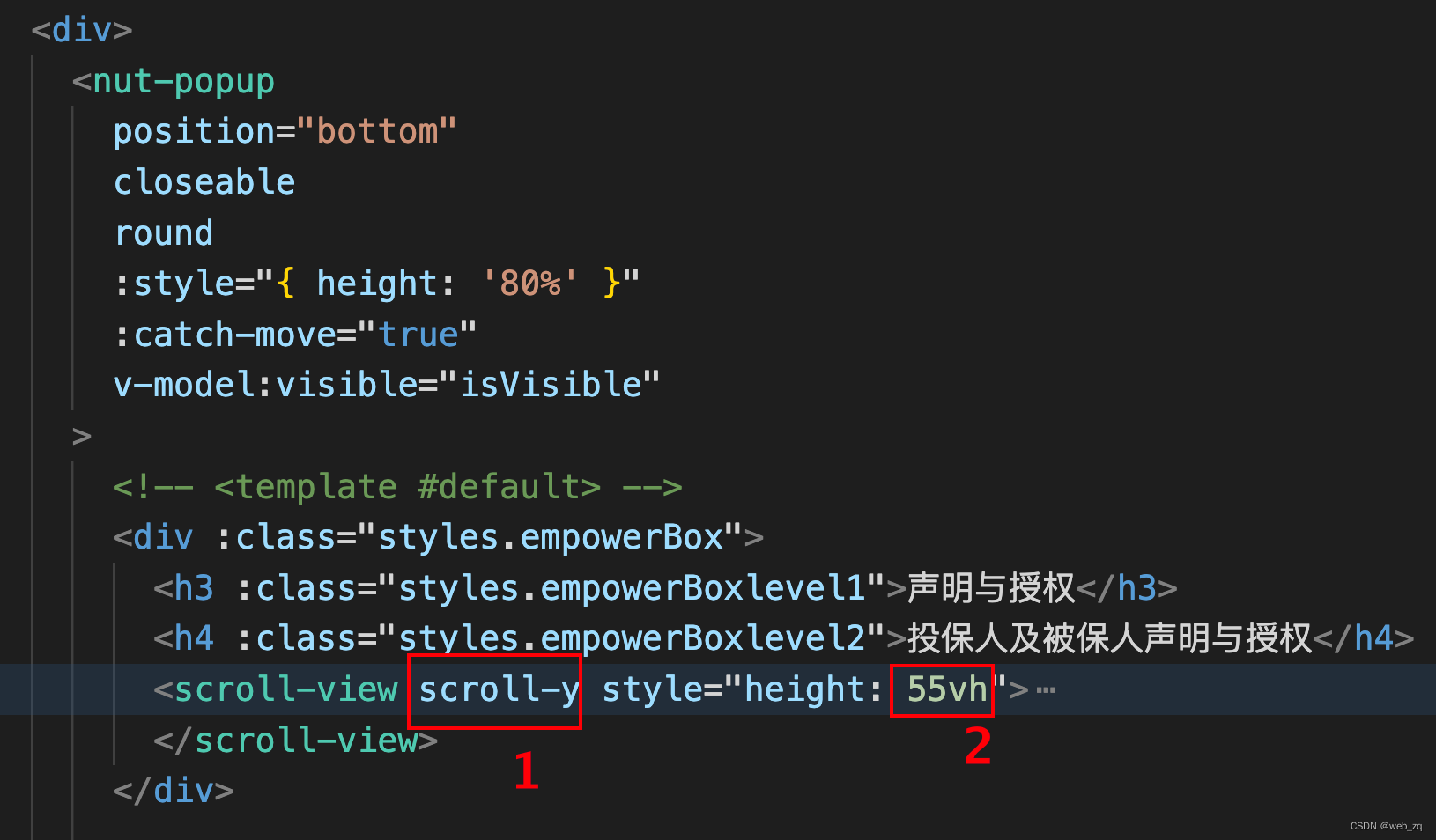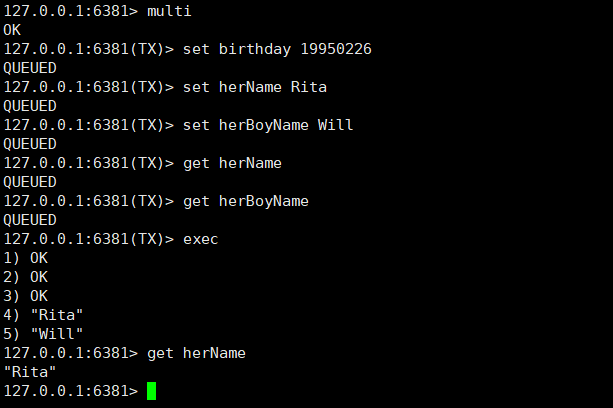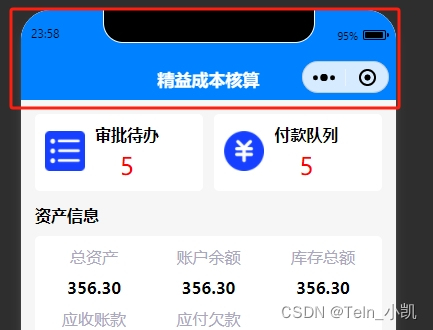
文章目录
- 1.1 Spring Security 的重要性
- 1.1.1 基础知识详解
- 1.1.2 主要案例:用户认证与授权
- 1.1.3 拓展案例 1:OAuth2 社交登录
- 1.1.4 拓展案例 2:JWT 认证
- 1.2 Spring Security 的核心特性
- 1.2.1 基础知识详解
- 1.2.2 主要案例:基于角色的访问控制
- 1.2.3 拓展案例 1:表单登录与数据库用户存储
- 1.2.4 拓展案例 2:整合 OAuth2
- 1.3 Spring Security 的发展历程
- 1.3.1 基础知识详解
- 1.3.2 主要案例:表达式驱动的安全性
- 1.3.3 拓展案例 1:OAuth2 集成
- 1.3.4 拓展案例 2:JWT 认证
1.1 Spring Security 的重要性
在这一节中,我们将首先深入探讨 Spring Security 的基础知识,然后通过三个实际案例,展示其在现实生产环境中的应用。这些案例将以 Java 为核心,展现 Spring Security 在保护应用程序方面的实用性。
1.1.1 基础知识详解
Spring Security 的重要性
在深入探讨 Spring Security 之前,让我们先了解为什么这个框架在现代 Web 应用开发中如此重要。
-
安全性的核心需求:
在数字时代,安全性是任何 Web 应用的基石。Spring Security 提供了一个健壮的安全框架,帮助开发者保护他们的应用免受各种网络攻击和安全威胁。 -
广泛的应用场景:
无论是小型企业应用还是大型企业级系统,Spring Security 都能灵活适应。它不仅支持传统的 Web 应用,还能很好地与微服务架构和云服务集成。 -
社区和支持:
作为 Spring 生态系统的一部分,Spring Security 拥有一个活跃的开发者社区和丰富的文档资源。这意味着它不断更新,能够应对新出现的安全挑战。
Spring Security 的核心概念
-
认证(Authentication):
- 认证是确认某个实体的身份。在 Spring Security 中,这通常指验证用户名和密码,但也可以扩展到更复杂的方法,如多因素认证。
- Spring Security 支持多种认证方式,如表单登录、LDAP、OAuth2 等。
-
授权(Authorization):
- 授权涉及决定认证通过的实体可以访问哪些资源。简单来说,就是决定谁能做什么。
- Spring Security 通过角色和权限来管理授权。它允许细粒度控制,比如基于方法的安全性。
-
防护措施:
- Spring Security 提供了多种防护措施来保护应用免受常见的网络攻击,例如跨站请求伪造(CSRF)和会话固定攻击。
- 它还提供了其他高级功能,如安全通道(HTTPS 强制使用)和内容安全策略(CSP)。
-
过滤器链:
- Spring Security 使用一系列过滤器来处理安全相关的任务。这些过滤器在请求进入应用之前拦截请求,执行例如认证和授权的操作。
- 了解这些过滤器及其顺序对于深入理解 Spring Security 的工作原理至关重要。
通过理解这些基础概念,开发者能够更好地利用 Spring Security 为他们的应用提供坚固的安全基础。下一步,我们将深入探讨如何在实际应用中实现这些概念,并通过具体案例加以展示。
1.1.2 主要案例:用户认证与授权
在这个案例中,我们将展示如何在一个 Spring Boot 应用程序中实现基本的用户认证和授权。这个案例将重点介绍如何配置 Spring Security 来管理用户登录,并根据用户角色授权访问特定资源。
案例 Demo
假设我们正在开发一个小型网站,该网站有两种类型的用户:普通用户和管理员。我们需要确保普通用户只能访问主页,而管理员则可以访问管理面板。
步骤 1:创建 Spring Boot 应用程序
首先,我们需要创建一个基本的 Spring Boot 应用程序。您可以使用 Spring Initializr(https://start.spring.io/)快速生成项目结构。
添加以下依赖:
- Spring Web
- Spring Security
步骤 2:配置 Spring Security
在我们的 Spring Boot 应用程序中,我们需要配置 Spring Security 来处理用户认证和授权。创建一个类继承自 WebSecurityConfigurerAdapter 并覆盖相应的方法。
import org.springframework.security.config.annotation.authentication.builders.AuthenticationManagerBuilder;
import org.springframework.security.config.annotation.web.builders.HttpSecurity;
import org.springframework.security.config.annotation.web.configuration.WebSecurityConfigurerAdapter;
import org.springframework.context.annotation.Configuration;
@Configuration
public class SecurityConfig extends WebSecurityConfigurerAdapter {
@Override
protected void configure(AuthenticationManagerBuilder auth) throws Exception {
auth.inMemoryAuthentication()
.withUser("user").password("{noop}password").roles("USER")
.and()
.withUser("admin").password("{noop}adminpass").roles("ADMIN");
}
@Override
protected void configure(HttpSecurity http) throws Exception {
http
.authorizeRequests()
.antMatchers("/admin").hasRole("ADMIN")
.antMatchers("/").hasAnyRole("USER", "ADMIN")
.and()
.formLogin();
}
}
在这个配置中,我们定义了两个用户:一个普通用户和一个管理员,以及它们的权限。我们还启用了表单登录。
步骤 3:创建控制器
现在,我们需要创建一个简单的控制器来管理不同的页面。
import org.springframework.stereotype.Controller;
import org.springframework.web.bind.annotation.GetMapping;
@Controller
public class MainController {
@GetMapping("/")
public String home() {
return "home";
}
@GetMapping("/admin")
public String admin() {
return "admin";
}
}
步骤 4:创建视图
为了完整性,我们还需要创建两个简单的 HTML 页面(home.html 和 admin.html)来表示主页和管理页面。
步骤 5:运行和测试
运行您的 Spring Boot 应用程序,并访问 http://localhost:8080/。您应该会看到一个登录表单。使用不同的用户登录,并验证它们是否能正确访问对应的页面。
通过这个案例,您不仅能够了解如何在 Spring Security 中实现基本的认证和授权机制,还能够看到这些概念在实际应用中是如何工作的。这为您提供了一个坚实的基础,让您可以根据自己的需要进一步扩展和定制安全性配置。
1.1.3 拓展案例 1:OAuth2 社交登录
在这个案例中,我们将展示如何在 Spring Boot 应用中集成 OAuth2 社交登录,允许用户通过 Google 账户登录。这种方式提供了一种更便捷、安全的用户认证方法,同时提高了用户体验。
案例 Demo
假设我们的 Spring Boot 应用需要提供用户通过 Google 账户登录的功能。我们将使用 Spring Security 的 OAuth2 客户端支持来实现这一点。
步骤 1:添加相关依赖
首先,在你的 pom.xml 文件中添加以下依赖:
<dependency>
<groupId>org.springframework.boot</groupId>
<artifactId>spring-boot-starter-oauth2-client</artifactId>
</dependency>
步骤 2:配置 OAuth2 登录
在 application.properties 或 application.yml 文件中,添加 Google OAuth2 客户端配置:
spring.security.oauth2.client.registration.google.client-id=YOUR_GOOGLE_CLIENT_ID
spring.security.oauth2.client.registration.google.client-secret=YOUR_GOOGLE_CLIENT_SECRET
spring.security.oauth2.client.registration.google.scope=profile,email
你需要替换 YOUR_GOOGLE_CLIENT_ID 和 YOUR_GOOGLE_CLIENT_SECRET 为你从 Google Cloud Console 获得的实际值。
步骤 3:安全配置
更新你的 SecurityConfig 类,以支持 OAuth2 登录:
import org.springframework.security.config.annotation.web.builders.HttpSecurity;
import org.springframework.security.config.annotation.web.configuration.WebSecurityConfigurerAdapter;
import org.springframework.context.annotation.Configuration;
@Configuration
public class SecurityConfig extends WebSecurityConfigurerAdapter {
@Override
protected void configure(HttpSecurity http) throws Exception {
http
.authorizeRequests()
.anyRequest().authenticated()
.and()
.oauth2Login();
}
}
这里我们配置了所有请求都需要认证,并且启用了 OAuth2 登录。
步骤 4:用户信息获取和处理
当用户通过 Google 登录后,你可能需要获取并处理用户信息。你可以通过实现 OAuth2UserService 来完成这一步:
import org.springframework.security.oauth2.client.userinfo.DefaultOAuth2UserService;
import org.springframework.security.oauth2.client.userinfo.OAuth2UserRequest;
import org.springframework.security.oauth2.core.user.OAuth2User;
import org.springframework.stereotype.Service;
@Service
public class CustomOAuth2UserService extends DefaultOAuth2UserService {
@Override
public OAuth2User loadUser(OAuth2UserRequest userRequest) throws OAuth2AuthenticationException {
OAuth2User user = super.loadUser(userRequest);
// 处理用户信息逻辑
return user;
}
}
步骤 5:运行和测试
启动应用程序并访问 http://localhost:8080/。现在,你应该能看到一个通过 Google 登录的选项。使用你的 Google 账户登录,并验证登录流程是否正常工作。
通过这个案例,你可以看到如何在 Spring Boot 应用中轻松集成 OAuth2 社交登录。这个功能不仅提高了用户体验,还增强了应用的安全性。
1.1.4 拓展案例 2:JWT 认证
在这个案例中,我们将演示如何在 Spring Boot 应用中实现基于 JSON Web Token (JWT) 的认证。JWT 是一种广泛使用的技术,用于在客户端和服务器之间安全地传输信息。
案例 Demo
假设我们正在开发一个 RESTful API,我们希望通过 JWT 来认证和授权用户。
步骤 1:添加 JWT 相关依赖
首先,在你的 pom.xml 文件中添加 JWT 的依赖。我们将使用 java-jwt 库:
<dependency>
<groupId>com.auth0</groupId>
<artifactId>java-jwt</artifactId>
<version>3.10.3</version>
</dependency>
步骤 2:实现 JWT 工具类
创建一个 JWT 工具类来生成和解析 JWT。这个类将负责创建令牌、验证令牌以及解析令牌:
import com.auth0.jwt.JWT;
import com.auth0.jwt.algorithms.Algorithm;
import com.auth0.jwt.exceptions.JWTVerificationException;
import com.auth0.jwt.interfaces.DecodedJWT;
import com.auth0.jwt.interfaces.JWTVerifier;
import java.util.Date;
public class JwtUtil {
private static final String SECRET_KEY = "your_secret_key";
public static String createToken(String username) {
return JWT.create()
.withSubject(username)
.withExpiresAt(new Date(System.currentTimeMillis() + 864000000)) // 设置过期时间
.sign(Algorithm.HMAC256(SECRET_KEY));
}
public static String validateTokenAndRetrieveSubject(String token) {
try {
JWTVerifier verifier = JWT.require(Algorithm.HMAC256(SECRET_KEY)).build();
DecodedJWT jwt = verifier.verify(token);
return jwt.getSubject();
} catch (JWTVerificationException exception) {
//Invalid signature/claims
return null;
}
}
}
步骤 3:配置 Spring Security
在 Spring Security 配置中,我们需要添加一个过滤器来检查传入的请求中的 JWT。
创建一个 JWT 过滤器类:
import org.springframework.security.web.authentication.UsernamePasswordAuthenticationFilter;
import org.springframework.security.core.context.SecurityContextHolder;
import org.springframework.security.authentication.UsernamePasswordAuthenticationToken;
import org.springframework.security.core.authority.SimpleGrantedAuthority;
import javax.servlet.http.HttpServletRequest;
import javax.servlet.http.HttpServletResponse;
import javax.servlet.FilterChain;
import java.io.IOException;
import java.util.Collections;
public class JwtFilter extends UsernamePasswordAuthenticationFilter {
@Override
protected void doFilterInternal(HttpServletRequest request, HttpServletResponse response, FilterChain chain)
throws IOException, ServletException {
String token = request.getHeader("Authorization");
if (token != null && token.startsWith("Bearer ")) {
token = token.substring(7);
String username = JwtUtil.validateTokenAndRetrieveSubject(token);
if (username != null) {
UsernamePasswordAuthenticationToken auth = new UsernamePasswordAuthenticationToken(
username, null, Collections.singletonList(new SimpleGrantedAuthority("USER")));
SecurityContextHolder.getContext().setAuthentication(auth);
}
}
chain.doFilter(request, response);
}
}
然后,在 SecurityConfig 类中注册这个过滤器:
@Override
protected void configure(HttpSecurity http) throws Exception {
http.addFilterBefore(new JwtFilter(), UsernamePasswordAuthenticationFilter.class);
// 其他配置...
}
步骤 4:创建认证端点
在你的控制器中,创建一个端点用于生成 JWT:
@PostMapping("/authenticate")
public ResponseEntity<?> createAuthToken(@RequestParam String username) {
String token = JwtUtil.createToken(username);
return ResponseEntity.ok(token);
}
步骤 5:运行和测试
启动你的应用程序,然后向 /authenticate 端点发送一个请求,携带用户名。你应该会收到一个 JWT。然后,你可以使用这个 JWT 来访问受保护的资源。
通过这个案例,你可以看到如何在 Spring Boot 应用中使用 JWT 进行认证。JWT 认证在开发现代 Web 应用和微服务架构时非常有用,尤其是在处理跨域请求和轻量级认证时。
1.2 Spring Security 的核心特性
1.2.1 基础知识详解
Spring Security 的核心特性
-
认证和授权:
- 认证 是验证用户身份的过程。Spring Security 支持多种认证方式,包括但不限于用户名和密码验证、LDAP 认证、OAuth2、JWT 等。
- 授权 则是决定已认证用户可以访问哪些资源的过程。Spring Security 允许你基于角色或更细粒度的权限来控制访问。
-
CSRF 防护:
- CSRF 攻击是一种常见的网络攻击方式,它试图利用用户的登录状态执行未经授权的操作。Spring Security 提供了 CSRF 防护机制,默认情况下在所有的 POST 请求上启用。
-
会话管理:
- 会话管理涉及用户的登录会话和会话过期。Spring Security 提供了丰富的会话管理功能,包括会话固定保护和并发会话控制。
-
密码存储:
- Spring Security 支持多种密码存储格式,包括明文、哈希、PBKDF2、SCrypt 等,并且鼓励开发者使用强密码编码方式。
-
方法级安全:
- 除了 URL 级别的安全控制外,Spring Security 还支持方法级别的安全控制。这允许开发者直接在 Java 方法上应用安全注解,实现更细粒度的控制。
-
LDAP 集成:
- 对于需要与 LDAP 目录服务集成的应用程序,Spring Security 提供了简便的集成方式。这使得在企业环境中实现认证和授权变得容易。
-
OAuth2 和 OpenID Connect:
- Spring Security 支持现代认证和授权协议,如 OAuth2 和 OpenID Connect,使得它可以与第三方认证提供者(如 Google、Facebook 等)轻松集成。
-
跨域资源共享(CORS)支持:
- 在开发 SPA(单页面应用程序)或调用跨域 API 时,CORS 是一个常见的问题。Spring Security 提供了 CORS 支持,允许开发者配置跨域请求的处理。
通过掌握这些基础知识,开发者可以利用 Spring Security 为他们的应用程序构建一个强大且灵活的安全系统。接下来的案例将更具体地展示如何将这些特性应用于实际开发中。
1.2.2 主要案例:基于角色的访问控制
在这个案例中,我们将演示如何在 Spring Boot 应用中实现基于角色的访问控制(RBAC)。我们假设有两种角色:“USER” 和 “ADMIN”,每种角色都有不同的访问权限。
案例 Demo
我们将创建一个简单的 Spring Boot 应用程序,其中包含两个受保护的页面:一个仅对普通用户开放,另一个仅对管理员开放。
实现步骤:
-
创建 Spring Boot 应用程序:
使用 Spring Initializr 创建一个新的 Spring Boot 项目,并添加spring-boot-starter-web和spring-boot-starter-security依赖。 -
配置安全性:
创建一个继承自WebSecurityConfigurerAdapter的配置类来定义安全规则。import org.springframework.security.config.annotation.web.builders.HttpSecurity; import org.springframework.security.config.annotation.web.configuration.WebSecurityConfigurerAdapter; import org.springframework.context.annotation.Configuration; import org.springframework.security.config.annotation.authentication.builders.AuthenticationManagerBuilder; @Configuration public class SecurityConfig extends WebSecurityConfigurerAdapter { @Override protected void configure(AuthenticationManagerBuilder auth) throws Exception { auth.inMemoryAuthentication() .withUser("user").password("{noop}password").roles("USER") .and() .withUser("admin").password("{noop}adminpass").roles("ADMIN"); } @Override protected void configure(HttpSecurity http) throws Exception { http .authorizeRequests() .antMatchers("/user").hasRole("USER") .antMatchers("/admin").hasRole("ADMIN") .anyRequest().authenticated() .and() .formLogin() .and() .logout(); } }在这个配置中,我们定义了两个用户和他们的角色。同时,我们设置了
/user只能被 USER 角色访问,/admin只能被 ADMIN 角色访问。 -
创建控制器:
创建一个控制器来管理不同的页面。import org.springframework.stereotype.Controller; import org.springframework.web.bind.annotation.GetMapping; @Controller public class MainController { @GetMapping("/user") public String user() { return "user"; } @GetMapping("/admin") public String admin() { return "admin"; } } -
创建视图:
为user和admin路径分别创建视图文件,例如user.html和admin.html。 -
运行和测试:
运行应用程序并访问http://localhost:8080/user和http://localhost:8080/admin。尝试使用不同的用户登录并验证它们是否能访问正确的页面。
通过这个案例,您将看到 Spring Security 如何实现基于角色的访问控制,这是构建安全 Web 应用程序的基础。这种方法可以确保用户只能访问他们被授权的资源。
1.2.3 拓展案例 1:表单登录与数据库用户存储
在这个案例中,我们将演示如何结合表单登录和数据库用户存储在 Spring Boot 应用中实现用户认证。这将涉及从数据库中加载用户信息,并根据这些信息进行认证。
案例 Demo
假设我们有一个应用程序,其中用户信息存储在数据库中。我们需要实现一个表单登录页面,用户可以使用其数据库中的凭据进行登录。
实现步骤:
-
添加依赖:
在pom.xml中添加spring-boot-starter-data-jpa和数据库相关的依赖,例如spring-boot-starter-data-jpa和h2(作为示例数据库)。<dependency> <groupId>org.springframework.boot</groupId> <artifactId>spring-boot-starter-data-jpa</artifactId> </dependency> <dependency> <groupId>com.h2database</groupId> <artifactId>h2</artifactId> <scope>runtime</scope> </dependency> -
配置数据源:
在application.properties中配置数据库连接信息。对于 H2 数据库,可以使用内存模式。spring.datasource.url=jdbc:h2:mem:testdb spring.datasource.driverClassName=org.h2.Driver spring.datasource.username=sa spring.datasource.password=password spring.jpa.database-platform=org.hibernate.dialect.H2Dialect -
创建用户模型和仓库:
定义一个用户实体类和一个继承JpaRepository的接口。import javax.persistence.Entity; import javax.persistence.Id; @Entity public class User { @Id private String username; private String password; // 省略 getter 和 setter } import org.springframework.data.jpa.repository.JpaRepository; public interface UserRepository extends JpaRepository<User, String> { } -
实现 UserDetailsService:
实现UserDetailsService接口,从数据库中加载用户信息。import org.springframework.security.core.userdetails.User; import org.springframework.security.core.userdetails.UserDetails; import org.springframework.security.core.userdetails.UserDetailsService; import org.springframework.security.core.userdetails.UsernameNotFoundException; import org.springframework.beans.factory.annotation.Autowired; public class CustomUserDetailsService implements UserDetailsService { @Autowired private UserRepository userRepository; @Override public UserDetails loadUserByUsername(String username) throws UsernameNotFoundException { User user = userRepository.findById(username) .orElseThrow(() -> new UsernameNotFoundException("User not found")); return new User(user.getUsername(), user.getPassword(), new ArrayList<>()); } } -
配置 Spring Security:
配置WebSecurityConfigurerAdapter,使用自定义的UserDetailsService和合适的密码编码器。import org.springframework.security.config.annotation.authentication.builders.AuthenticationManagerBuilder; @Autowired private CustomUserDetailsService userDetailsService; @Override protected void configure(AuthenticationManagerBuilder auth) throws Exception { auth.userDetailsService(userDetailsService) .passwordEncoder(new BCryptPasswordEncoder()); } -
创建登录表单:
创建一个简单的 HTML 登录表单。 -
运行和测试:
运行应用程序,并通过访问http://localhost:8080/login来测试登录功能。
通过这个案例,您可以了解如何结合表单登录和数据库用户存储来实现认证功能。这在实际开发中非常常见,为应用程序提供了更大的灵活性和安全性。
1.2.4 拓展案例 2:整合 OAuth2
在这个案例中,我们将演示如何在 Spring Boot 应用中整合 OAuth2,实现第三方登录。我们将以 Google 作为 OAuth2 提供商的例子来实现这一功能。
案例 Demo
假设我们有一个 Spring Boot 应用,需要让用户可以通过他们的 Google 账户登录。
实现步骤:
-
添加 OAuth2 客户端依赖:
在pom.xml中添加spring-boot-starter-oauth2-client依赖。<dependency> <groupId>org.springframework.boot</groupId> <artifactId>spring-boot-starter-oauth2-client</artifactId> </dependency> -
配置 OAuth2 客户端:
在application.properties或application.yml中配置 Google 的 OAuth2 客户端信息。你需要替换client-id和client-secret为你在 Google API Console 中获取的实际值。spring.security.oauth2.client.registration.google.client-id=your-google-client-id spring.security.oauth2.client.registration.google.client-secret=your-google-client-secret spring.security.oauth2.client.registration.google.scope=profile,email -
安全配置:
修改你的SecurityConfig类,以支持 OAuth2 登录。import org.springframework.security.config.annotation.web.builders.HttpSecurity; import org.springframework.security.config.annotation.web.configuration.WebSecurityConfigurerAdapter; @Override protected void configure(HttpSecurity http) throws Exception { http .authorizeRequests() .anyRequest().authenticated() .and() .oauth2Login(); }这里我们配置了所有请求都需要认证,并且启用了 OAuth2 登录。
-
获取用户信息:
创建一个控制器来处理登录后的用户信息。import org.springframework.security.oauth2.client.authentication.OAuth2AuthenticationToken; import org.springframework.stereotype.Controller; import org.springframework.web.bind.annotation.GetMapping; @Controller public class UserController { @GetMapping("/user") public String user(OAuth2AuthenticationToken token) { // 这里可以获取到用户信息 // token.getPrincipal().getAttributes(); return "user"; } } -
运行和测试:
启动应用程序,并尝试通过访问http://localhost:8080/user使用 Google 账户登录。检查用户信息是否正确获取。
通过这个案例,您可以看到在 Spring Boot 应用中整合 OAuth2 并不复杂。这使得应用可以利用第三方服务提供商的强大认证机制,同时提高了用户体验。
1.3 Spring Security 的发展历程
1.3.1 基础知识详解
Spring Security 的演变
-
从 Acegi 到 Spring Security:
- Acegi Security: 最初作为一个独立的安全框架,Acegi Security 为 Spring 应用提供了强大的安全性支持。
- Spring Security 2.0: Acegi Security 被正式纳入 Spring 框架,并更名为 Spring Security。这个版本主要专注于简化配置,并引入了新的命名空间和注解驱动的安全配置。
-
功能增强和改进:
- Spring Security 3.0: 引入了多项新特性,包括对注解的支持,使得开发者可以更灵活地配置安全策略。
- Spring Security 4.0: 进一步增强了对 Java 配置的支持,减少了对 XML 的依赖。同时,增强了对 REST API 的安全支持。
-
适应现代应用的需求:
- Spring Security 5.0: 标志着对现代应用安全的重大更新,包括对 OAuth2 和 OpenID Connect 的支持,以及对 Reactive 应用的安全支持。
核心特性的演进
- 认证和授权: 从基本的表单登录和 HTTP 基本认证到支持 LDAP、OAuth2、OpenID Connect 和 JWT 等多样化认证方式。
- 安全性控制的细化: 引入方法级别的安全控制,允许在不同方法上应用不同的安全策略。
- 对 RESTful API 的支持: 随着 RESTful API 在现代应用中的普及,Spring Security 加强了对无状态 REST API 的安全性支持,例如通过 JWT 实现无状态认证。
- 易用性和灵活性: 通过提供更多的 Java 配置选项,减少了对 XML 的依赖,使得配置更加灵活和易于理解。
- 响应式编程的支持: 为适应 Spring WebFlux 和响应式编程模型的兴起,Spring Security 5 引入了对响应式应用的支持。
通过理解 Spring Security 的发展历程和其核心特性的演进,开发者可以更好地把握其使用方式和最佳实践,从而为应用程序提供强大而灵活的安全解决方案。
1.3.2 主要案例:表达式驱动的安全性
在这个案例中,我们将展示如何在 Spring Boot 应用中使用 Spring Security 的表达式驱动安全性,以实现更细粒度的访问控制。
案例 Demo
假设我们正在开发一个网上书店应用,需要实现以下安全需求:只有管理员可以添加书籍,而注册用户可以浏览书籍。
实现步骤:
-
创建 Spring Boot 应用程序:
使用 Spring Initializr 创建一个新的 Spring Boot 项目,并添加spring-boot-starter-web和spring-boot-starter-security依赖。 -
配置安全性:
创建一个继承自WebSecurityConfigurerAdapter的配置类并开启方法级安全。import org.springframework.security.config.annotation.method.configuration.EnableGlobalMethodSecurity; import org.springframework.security.config.annotation.web.configuration.WebSecurityConfigurerAdapter; @Configuration @EnableGlobalMethodSecurity(prePostEnabled = true) public class SecurityConfig extends WebSecurityConfigurerAdapter { // 配置用户认证逻辑 } -
设置用户角色和权限:
在configure(AuthenticationManagerBuilder auth)方法中设置用户角色和权限。@Override protected void configure(AuthenticationManagerBuilder auth) throws Exception { auth.inMemoryAuthentication() .withUser("admin").password("{noop}admin123").roles("ADMIN") .and() .withUser("user").password("{noop}user123").roles("USER"); } -
使用安全表达式:
在你的服务类中使用安全注解来限制方法访问。import org.springframework.security.access.prepost.PreAuthorize; @Service public class BookService { @PreAuthorize("hasRole('ADMIN')") public void addBook(Book book) { // 逻辑添加书籍 } @PreAuthorize("hasAnyRole('USER', 'ADMIN')") public List<Book> listBooks() { // 返回书籍列表 } } -
创建控制器:
实现一个控制器,调用BookService的方法。@RestController public class BookController { @Autowired private BookService bookService; @PostMapping("/books") public ResponseEntity<String> addBook(@RequestBody Book book) { bookService.addBook(book); return ResponseEntity.ok("Book added successfully"); } @GetMapping("/books") public ResponseEntity<List<Book>> getBooks() { return ResponseEntity.ok(bookService.listBooks()); } } -
测试安全性:
运行应用程序,并使用不同角色的用户尝试访问/books的 GET 和 POST 方法。
通过这个案例,您可以看到如何在实际项目中使用 Spring Security 的表达式驱动安全性来实现基于角色的细粒度访问控制。这种方法为应用程序提供了强大的安全性和灵活性。
1.3.3 拓展案例 1:OAuth2 集成
在这个案例中,我们将展示如何在 Spring Boot 应用中整合 OAuth2,以便用户可以使用外部服务提供商进行认证。我们以集成 GitHub 作为 OAuth2 提供商为例。
案例 Demo
假设我们有一个 Spring Boot 应用,我们希望用户能够使用他们的 GitHub 账户登录。
实现步骤:
-
添加 OAuth2 客户端依赖:
在pom.xml中添加spring-boot-starter-oauth2-client依赖。<dependency> <groupId>org.springframework.boot</groupId> <artifactId>spring-boot-starter-oauth2-client</artifactId> </dependency> -
配置 OAuth2 客户端:
在application.properties或application.yml中配置 GitHub 的 OAuth2 客户端信息。你需要在 GitHub 创建 OAuth 应用以获取client-id和client-secret。spring.security.oauth2.client.registration.github.client-id=your-github-client-id spring.security.oauth2.client.registration.github.client-secret=your-github-client-secret spring.security.oauth2.client.registration.github.scope=user:email -
安全配置:
修改你的SecurityConfig类,以支持 OAuth2 登录。import org.springframework.security.config.annotation.web.builders.HttpSecurity; import org.springframework.security.config.annotation.web.configuration.WebSecurityConfigurerAdapter; @Override protected void configure(HttpSecurity http) throws Exception { http .authorizeRequests() .anyRequest().authenticated() .and() .oauth2Login(); }这里我们配置了所有请求都需要认证,并且启用了 OAuth2 登录。
-
创建用户信息端点:
创建一个控制器来显示登录用户的信息。import org.springframework.security.core.annotation.AuthenticationPrincipal; import org.springframework.security.oauth2.core.user.OAuth2User; import org.springframework.web.bind.annotation.GetMapping; import org.springframework.web.bind.annotation.RestController; @RestController public class UserController { @GetMapping("/user") public Map<String, Object> user(@AuthenticationPrincipal OAuth2User principal) { return Collections.singletonMap("name", principal.getAttribute("name")); } } -
运行和测试:
启动应用程序,并尝试访问http://localhost:8080/user。你应该能够看到一个重定向到 GitHub 的登录页面。使用你的 GitHub 凭据登录后,应用将显示你的 GitHub 用户名。
通过这个案例,你可以了解到如何在 Spring Boot 应用中实现 OAuth2 集成,从而允许用户使用外部服务提供商的账户进行认证,这对于提升用户体验和应用安全性都非常有帮助。
1.3.4 拓展案例 2:JWT 认证
在这个案例中,我们将演示如何在 Spring Boot 应用中使用 JSON Web Tokens (JWT) 实现无状态认证。这对于保护 REST API 尤其重要。
案例 Demo
假设我们正在开发一个提供 REST API 的应用程序,我们希望通过 JWT 来认证和授权用户。
实现步骤:
-
添加 JWT 依赖:
在pom.xml中添加处理 JWT 的依赖库,例如java-jwt。<dependency> <groupId>com.auth0</groupId> <artifactId>java-jwt</artifactId> <version>3.10.3</version> </dependency> -
实现 JWT Token 服务:
创建一个服务类来生成和验证 JWT。import com.auth0.jwt.JWT; import com.auth0.jwt.algorithms.Algorithm; import java.util.Date; public class JwtTokenService { private static final String SECRET = "YourSecretKey"; public String generateToken(String username) { return JWT.create() .withSubject(username) .withExpiresAt(new Date(System.currentTimeMillis() + 86400000)) // 1 day .sign(Algorithm.HMAC256(SECRET)); } public String validateTokenAndGetUsername(String token) { return JWT.require(Algorithm.HMAC256(SECRET)) .build() .verify(token) .getSubject(); } } -
创建 JWT 过滤器:
创建一个 JWT 过滤器来拦截请求并验证 JWT。import javax.servlet.FilterChain; import javax.servlet.http.HttpServletRequest; import javax.servlet.http.HttpServletResponse; import org.springframework.web.filter.OncePerRequestFilter; import org.springframework.security.core.context.SecurityContextHolder; import org.springframework.security.authentication.UsernamePasswordAuthenticationToken; public class JwtFilter extends OncePerRequestFilter { private JwtTokenService jwtTokenService = new JwtTokenService(); @Override protected void doFilterInternal(HttpServletRequest request, HttpServletResponse response, FilterChain filterChain) { String token = request.getHeader("Authorization"); if (token != null && token.startsWith("Bearer ")) { token = token.substring(7); String username = jwtTokenService.validateTokenAndGetUsername(token); if (username != null) { UsernamePasswordAuthenticationToken auth = new UsernamePasswordAuthenticationToken(username, null, null); SecurityContextHolder.getContext().setAuthentication(auth); } } filterChain.doFilter(request, response); } } -
配置 Spring Security:
在WebSecurityConfigurerAdapter中配置 JWT 过滤器。import org.springframework.security.config.annotation.web.builders.HttpSecurity; import org.springframework.security.config.http.SessionCreationPolicy; @Override protected void configure(HttpSecurity http) throws Exception { http .csrf().disable() .sessionManagement().sessionCreationPolicy(SessionCreationPolicy.STATELESS) .and() .addFilter(new JwtFilter()) .authorizeRequests() .antMatchers("/api/protected").authenticated() .antMatchers("/api/public").permitAll(); } -
创建测试端点:
创建一些测试用的 RESTful 端点。import org.springframework.web.bind.annotation.GetMapping; import org.springframework.web.bind.annotation.RestController; @RestController public class TestController { @GetMapping("/api/protected") public String protectedHello() { return "Hello from protected API"; } @GetMapping("/api/public") public String publicHello() { return "Hello from public API"; } } -
运行和测试:
启动应用程序,并使用生成的 JWT 尝试访问/api/protected。没有有效 JWT 的请求应该被拒绝。
通过这个案例,您可以看到如何在 Spring Boot 应用中实现基于 JWT 的认证。JWT 认证提供了一种有效的方式来保护 REST API,确保只有拥有有效令牌的用户才能访问受保护的资源。


